36 Amazing Cleaning Hacks You’ll Wish You Knew Sooner
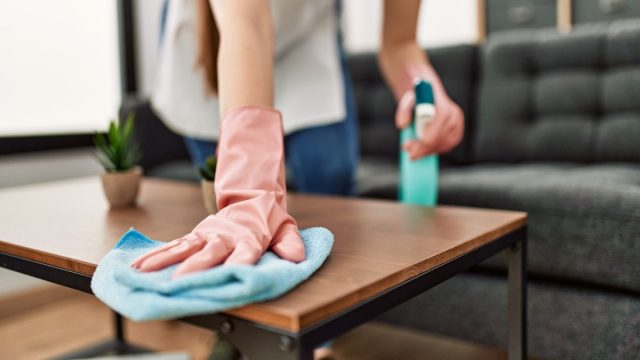
Following the events of the past few years, giving your home a daily deep clean has become more important than ever. However, just because you’re cleaning your home more frequently doesn’t mean you need to spend more time on that often thankless task. We’ve reached out to cleaning and disinfecting experts to bring you cleaning hacks that will save you time, money, and your sanity in the long run. Read on to learn 36 tricks of the trade. (Spoiler alert: Get ready to stock up on vinegar!)
RELATED: The Ultimate Checklist for Deep Cleaning Your House (Room by Room!).
36 Cleaning Tips to Make Life Even Easier
1. Disinfect your keyboard with a toothbrush and some vinegar.
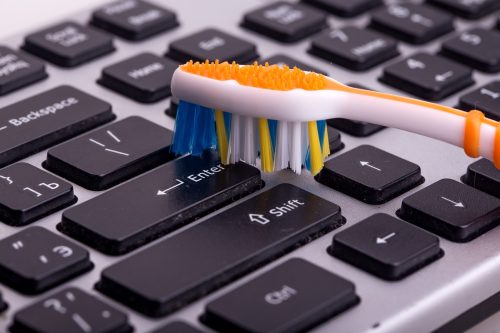
You’d be amazed by how much bacteria lives on your computer keyboard. One 2018 study published in the International Journal of Environmental Research and Public Health tested various keyboards and found that they contained strains of everything from Bacillus (which can cause a host of diseases) to Staphylococcus aureus (which can cause upper respiratory tract infections).
The good news? Disinfecting it and getting it clean is simple. “Dip a toothbrush in a half-vinegar, half-water solution and scrub on and between keys to eliminate germs,” says Liz O’Hanlon, director of U.K.-based commercial cleaning service Metro Cleaning Ltd.
2. And disinfect your sponges in the microwave.
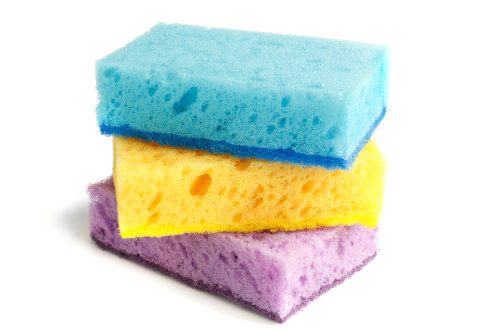
You use your kitchen sponge to clean utensils, dishes, and even countertops. Unfortunately, according to a 2017 study published in Scientific Reports, doing so might be spreading millions of bacteria throughout your home.
But it’s much easier to disinfect your sponge than you might have thought. “If you put a damp sponge in the microwave for 90 seconds on full power, you’ll reduce the amount of bacteria on it by [up to] 99 percent,” says O’Hanlon.
3. Steam clean your microwave.
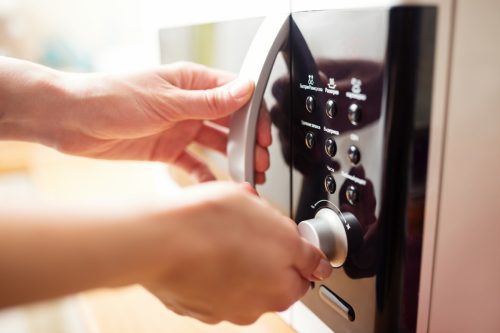
That stuck-on mess from the time you tried to heat up your leftover spaghetti is going to take a lot of elbow grease to remove. Luckily, a little steam can make the job a whole lot easier.
“Clean your microwave without scrubbing by putting a bowl of hot water inside and setting it to five minutes,” suggests Justin Carpenter, owner of house cleaning service Tucson Maids. Carpenter explains that the steam created through heating the water will loosen the grime in your microwave and make it easy to wipe it off with a cloth.
4. Use denture tablets to clean your coffee pot.
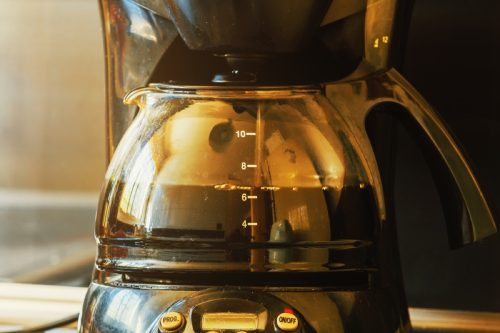
Your grimy coffee maker doesn’t need replacing—it just needs some denture cleaner! “Put a couple [tablets] where the water goes and run a couple of cycles in your machine—this will clear out any gunk that could be formed on the inside,” says Abe Navas, general manager of Emily’s Maids, a house cleaning service in Dallas, Texas.
5. And use vinegar to disinfect your coffee maker.
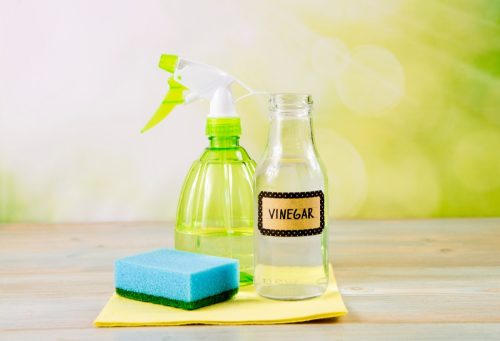
Even those of us who use our coffee makers daily probably aren’t deep-cleaning them as often as we should be. Research published in 2015 in Scientific Reports suggests that our coffee makers are a veritable hotbed of bacterial activity, which means that you might just be ingesting some of that icky stuff along with your dark roast.
So, how should you combat all that bacteria? “Once a month, fill your coffee maker’s reservoir with four tablespoons of white vinegar mixed with water, run it, and then run it once more with only water to get rid of any vinegar smell,” says O’Hanlon.
6. Get oil stains out using chalk.
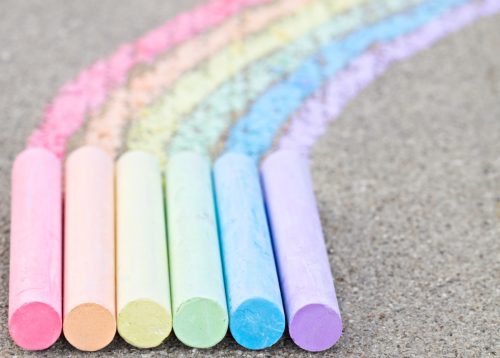
Yes, chalk. Apparently, the popular schoolroom accessory can double as an excellent stain stick for when you need to get food and oil stains out of clothing. Remove any excess debris using a clean paper towel before covering the area with chalk. You can also throw on a little stain remover before tossing it into the wash for more stubborn spots.
7. Use baby oil to remove water stains.
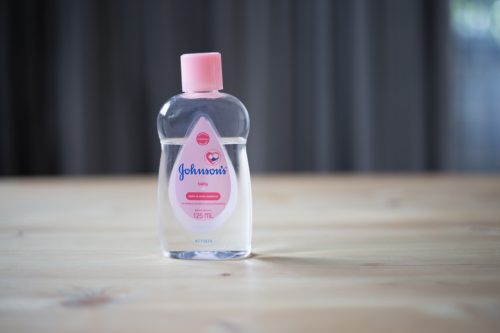
When trying to remove water stains from toasters, kettles, stainless steel sinks, or anything else with a metal surface, just remember: baby oil is your friend. Simply wipe a few drops onto the problem area (no need to rinse). Just remember, this won’t sanitize the area, so be sure to grab additional cleaning supplies if that’s also on the to-do list.
8. Get rid of water stains with vinegar, too.
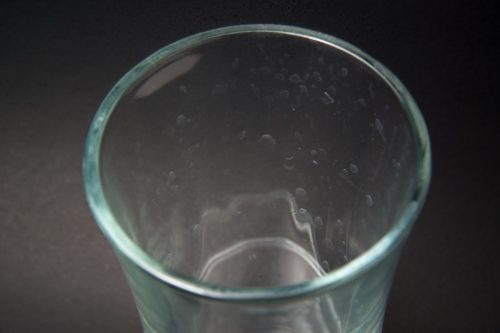
If water stains on your glasses are the problem, then vinegar is the solution yet again. According to cleaning service Maid Right, all you have to do is create a mixture of 50 percent vinegar and 50 percent water, apply it to the water stains, and let it sit for 15 minutes or so. Once the vinegar solution has had time to break down the debris, use a toothbrush to scrub the scum away, give the glass a rinse, and wipe the surface clean.
RELATED: Cleaning Pro Reveals the 5 Things You Should Never Vacuum.
9. Use dryer sheets to clean your pans.
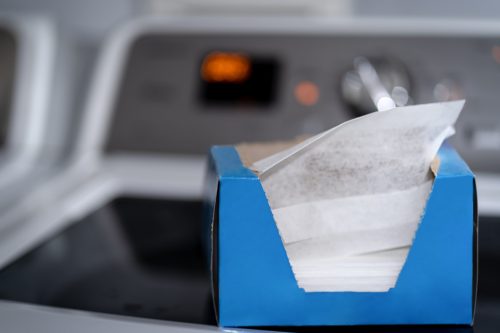
That grime stuck to your cookie sheets and frying pans is no match for your dryer sheets. “Put the dirty item in the sink with soap, warm water, and a dryer sheet, and leave for an hour or two,” says O’Hanlon. When you rinse with clean water afterward, the mess will go down the drain, too!
10. Scrub your cast iron skillet with a potato.
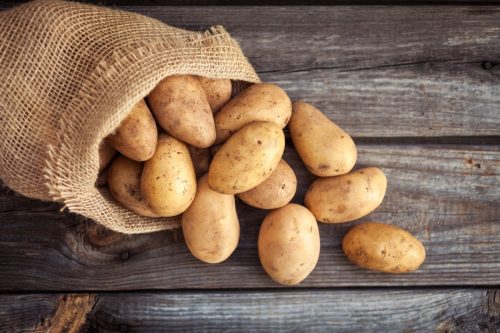
Don’t want to ruin your precious cast iron skillet by—gasp—cleaning it with soap? Break out a spud instead! “Pour some coarse salt into the cast iron pan and use half a potato to rub it in until that mess has broken up and can be rinsed off,” O’Hanlon recommends.
11. Un-scratch your plates with baking soda.
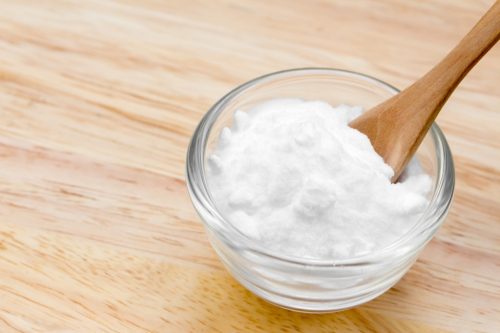
A slip of the knife here, an overzealous fork there, and suddenly you’ve got a stack of unsightly scratched plates in your kitchen. Fortunately, it’s easy to make your plates look brand new again with some baking soda.
“Make a paste with baking soda and water, buff it into the scratches,” then rinse it away and those scratches will disappear, says O’Hanlon.
12. Clean burnt-on messes with rhubarb.
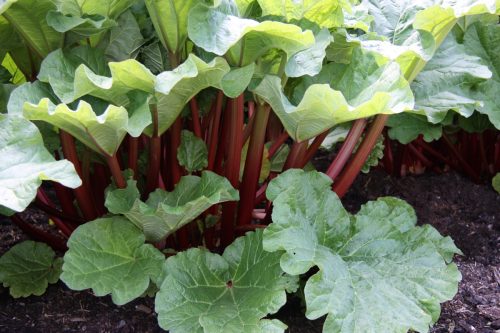
No dish soap? No problem! If you’ve got some rhubarb in your fridge or garden, you have everything you need to remove that caked-on mess.
Add a few sticks of rhubarb and some water to a pan and bring them to a boil, leaving them to simmer for five minutes, suggests Sean Parry, a cleaning expert at U.K.-based home cleaning company Neat Services.
Once the water has cooled down, wipe the pan down with a scrubber sponge and the mess will lift away. The acids contained in rhubarb react perfectly with the carbons that are produced by baked-on food, explains Parry. “When they are boiled together, the reactions loosen the burned areas and make it easier to scrub away.”
13. Make your blender clean itself.
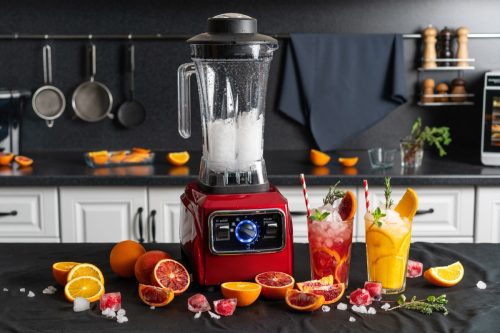
Cleaning a blender is a perilous activity at best. The tedious task essentially involves sticking your hand into a bowl full of knives and hoping for the best every time you try to remove excess food from your blades. But it’s actually easy to remove that stuck-on gunk. Just pour “some warm water, baking soda, and washing-up soap in your blender, and blend it for a few seconds,” says O’Hanlon. When you’re done, give it a quick rinse with clean water or toss it in the dishwasher to get it squeaky clean.
14. Freshen up your garbage disposal with some lemons.
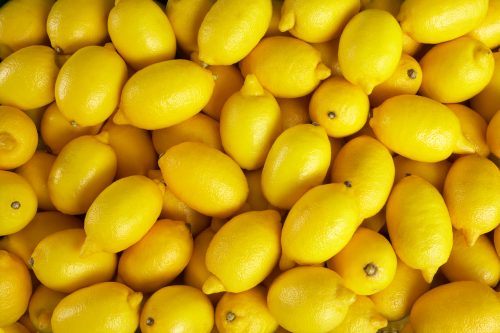
With all the junk we throw into our garbage disposals, it’s no wonder they’re a veritable petri dish—with the nasty odors to prove it. Thankfully, making them a whole lot cleaner is easy: “Drop some cut lemons down your drain for a fresh scent” when you turn the disposal on, suggests O’Hanlon.
15. And clean your cutting boards with lemon, as well.
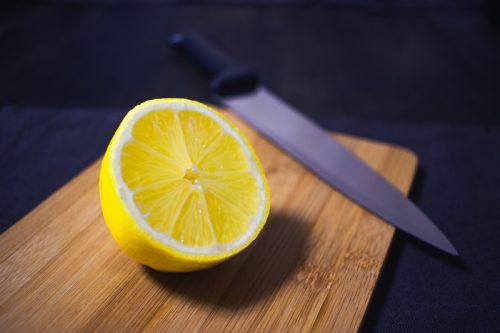
While most plastic cutting boards can be popped into the dishwasher, wooden ones are a different animal entirely. “You can get out those difficult stains in your wooden boards by rubbing them with some lemon and salt,” says O’Hanlon. She recommends letting the salt sit on the cutting board for a few minutes and rubbing it in with the lemon before rinsing it away.
16. Remove mildew spots with vodka.

That bottle of vodka in your freezer is good for more than just making martinis. If you’ve got mildew in your bathroom, it can help you get rid of the problem in no time. “Fill a spray bottle with a 50-50 mix of vodka and water, spray it on the affected areas, and leave it for around 10 minutes,” then wipe it away with a clean cloth, suggests Parry. He notes that the alcohol in the vodka will not only clean the mess but will kill the mildew, too.
RELATED: 21 Ways to Do Laundry in Your Freezer.
17. Use Kool-Aid to clean your toilet bowl.
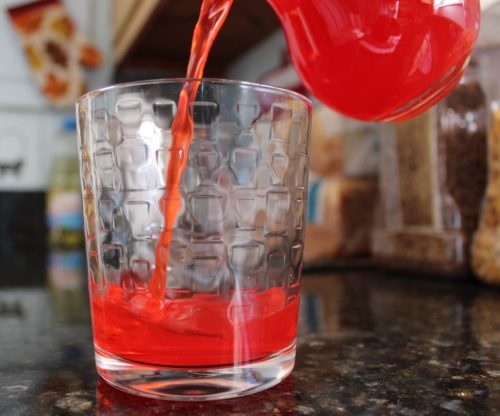
Can’t find bleach in your local supermarket? Your favorite childhood drink mix can help you clean your toilet just as efficiently. “Give your toilet a generous sprinkling of [lemonade] Kool-Aid powder, and let the mixture sit,” says Perry. Then, tackle the sides using a toilet brush and flush.
18. Keep your shower doors clean with synthetic soap.
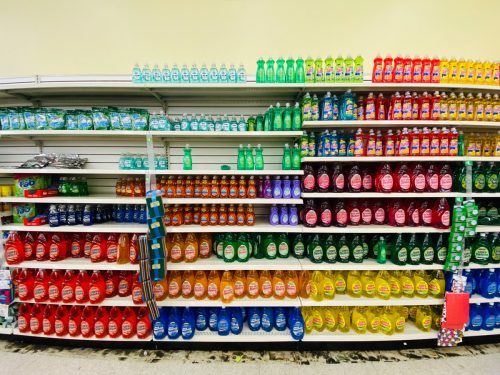
You can scum-proof your shower doors in just a few simple steps. Start by removing any existing mold, mildew, or streaks using a regular glass cleaner. If you’re working with textured glass, you can use a Magic Eraser so that you can more easily access the cracks. Then, scrape off all remaining build-up using a razor and dry off the doors using a cleaning rag. To prevent scum from building back up, stop using real soap and switch to a synthetic option instead (any soap that comes in soap or gel form).
19. And scrub the bathtub clean with grapefruit and salt.
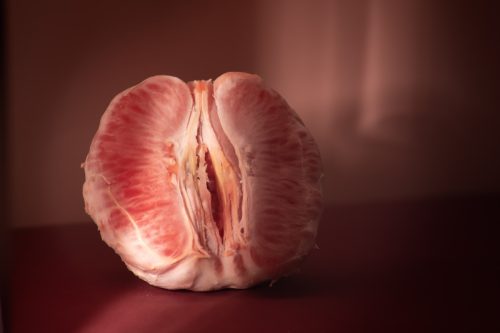
The next time you’re at the supermarket, make sure to throw an extra grapefruit into your cart—not for eating, but for cleaning. “The fruit works wonders for a dirty bath, sink, or shower surface. Just cut the fruit open and cover it in salt,” says O’Hanlon. Again, it’s the combination of citric acid and abrasive salt that can help get rid of soap scum around the tub.
20. Clean your shower head with vinegar.
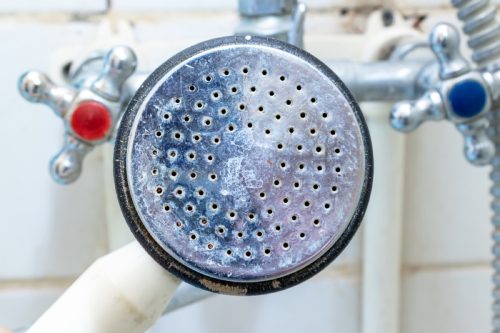
That spotty showerhead in your bathroom is just as gross as it looks. In fact, one 2009 study published in the journal Proceedings of the National Academy of Sciences of the United States of America found that 20 percent of shower heads tested were contaminated with Mycobacterium avium, which can cause serious respiratory health issues.
Luckily, keeping the outside of your shower head clean isn’t difficult. “Fill a sandwich bag with white vinegar and attach it to your shower head with a rubber band, leaving to soak overnight,” suggests O’Hanlon. By the morning, you’ll be able to wipe those marks away with ease.
21. Make your sink fixtures gleam with wax paper.
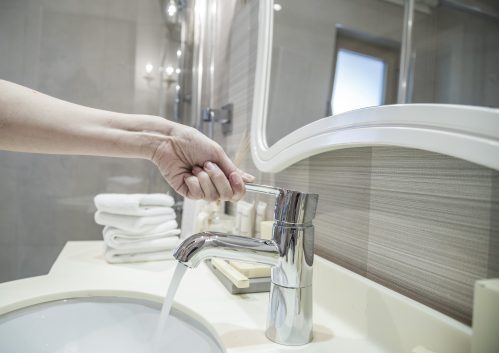
The constant wear and tear we put on our sinks often means they look less than clean, even after they’ve been thoroughly wiped down. If you want to get your sink spotless, “after cleaning your sink with an antibacterial cleanser, polish your taps and handles with some wax paper,” says O’Hanlon. The wax in the paper will also repel water, preventing future stains from taking hold.
22. Remove silver tarnish with toothpaste.
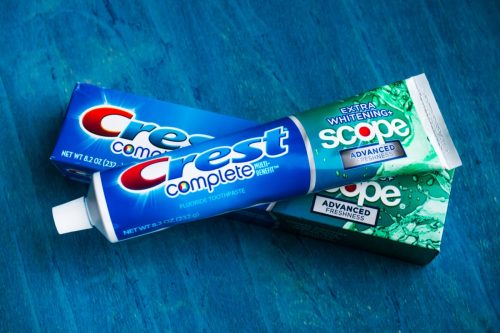
Even if you don’t have silver cleaner handy, you can get your tarnished serving pieces gleaming again with a product you already have in your medicine cabinet. “Simply apply toothpaste to your pieces and rub it in with a rag,” says Parry. Or use a soft toothbrush to work it into any ornate designs in your pieces.
23. Clean your windows with newspaper instead of paper towels.
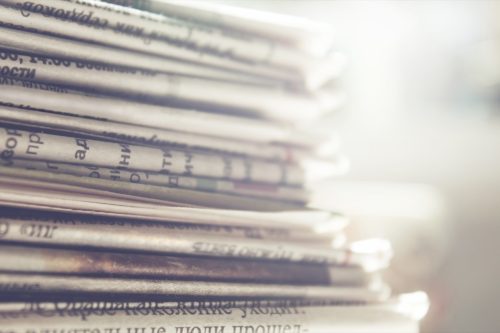
If you’re using paper towels to wipe your mirrors and windows, you’re doing yourself a disservice.
“The cheap and easy way to clean your glass surfaces is with newspaper, which won’t streak or leave your surfaces covered with annoying bits [of lint],” explains O’Hanlon. Just spray your usual cleaner onto the glass, spread it with the newspaper, and voila! A streak-free shine.
24. Use dish detergent to clean your window screens.
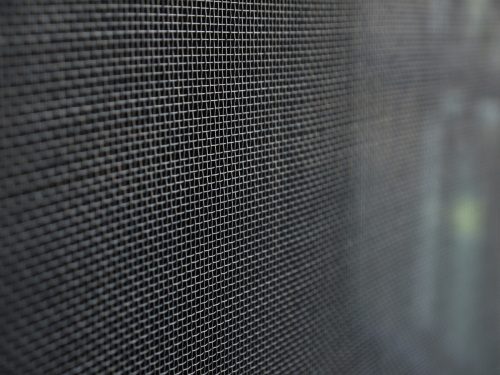
Don’t have the proper cleaning tools needed to tackle those grimy window screens? With just a few household items and a few minutes of your time, you can get them squeaky clean—and improve your view along the way.
After removing all of your window screens, add a few drops of dishwashing liquid to a bucket of water and gently scrub them with the homemade cleaning solution, suggests Dean Davies, a senior supervisor for the cleaning department at Fantastic Services. Once this is done, Davies recommends rinsing them with fresh water and leaving them to air dry before reinstalling them.
RELATED: 5 Quick Ways to Get Rid of Kitchen Smells Before Guests Come Over.
25. Clean your blinds with your vacuum.

Cleaning blinds is a thankless task that tends to take longer than anticipated when you’re using a feather duster. Instead, O’Hanlon recommends the following cleaning hack: Use the upholstery attachment on your vacuum to rid them of dirt. You can also “use tumble dryer sheets… [with] tongs to reach the top,” she says.
26. Eliminate upholstery stains with shaving cream.
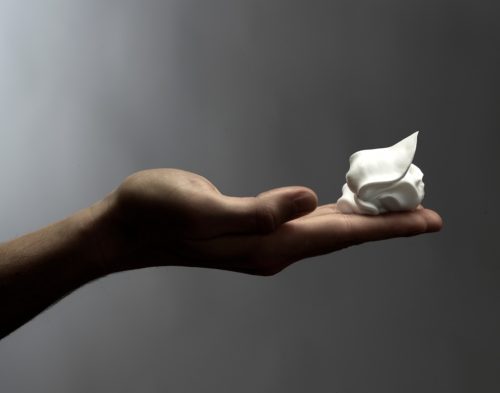
There’s no need to hire an expensive professional to get tough stains out of your upholstery. “Rub a little shaving cream (not gel) into the stain, let it sit for 30 minutes on more stubborn stains, and then blot to dry,” recommends O’Hanlon. However, she cautions that this should be done on a small and inconspicuous area of your furniture first to make sure it doesn’t affect the upholstery’s color.
27. Sweep your baseboards with a dryer sheet.
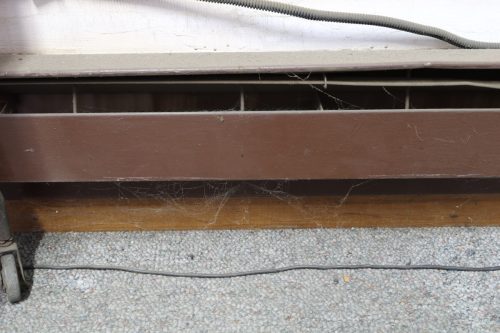
Getting on your hands and knees to clean your baseboards is anything but enjoyable. The good news? You can keep them clean and keep your house smelling great with one clever trick.
“Just attach a dryer sheet [to your sweeper] and you’ll pick up all the dust while adding a fresh smell to your home,” says O’Hanlon.
28. Freshen up your mattress with baking soda.
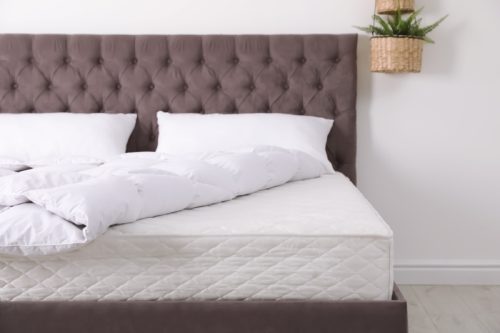
With any luck, by the time you reach adulthood, you’re washing your pillows and pillowcases on a semi-regular basis. However, most of us don’t do much in the way of cleaning our mattresses. But there’s an easy way to limit the bacterial contamination and allergy-provoking dust on your bed.
“Vacuum your mattress and apply a sprinkling of baking soda to it. Leave to sit for a few hours to soak up any odors, then vacuum again,” says O’Hanlon. She recommends doing this at least once a month.
29. Dust your surfaces with a lint roller.
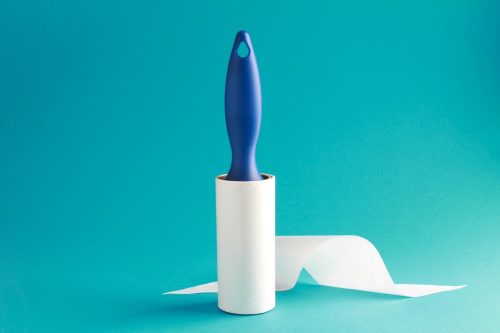
A feather duster won’t do much good when you’re trying to pick up tiny pieces of dirt or other small debris. Instead, “for those stubborn items, such as glitter or pet hair, a sticky lint roller will work,” says O’Hanlon.
30. Clean your TV screen with a dry cloth instead of spray-on cleaners.

If you want to clean your TV—and keep it in working order—you’ll want to avoid spraying chemicals directly onto your screen. O’Hanlon says to instead “gently wipe the screen with a dry cloth to remove dust, but don’t press too hard.” For tougher marks, she suggests you lightly dampen the cloth with water first.
31. Remove carpet stains with vinegar and a steam iron.
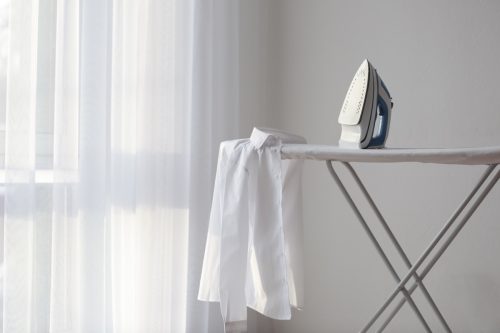
You don’t need to rent a carpet cleaner to get those stains out of your rugs—all you need is some vinegar, some water, and a steam iron. “Mix vinegar and water in a 1:3 ratio, apply it to the stain, and then cover the stain with a damp cloth before steaming it for 30 seconds,” explains O’Hanlon.
32. Keep your washer smelling fresh with bleach.
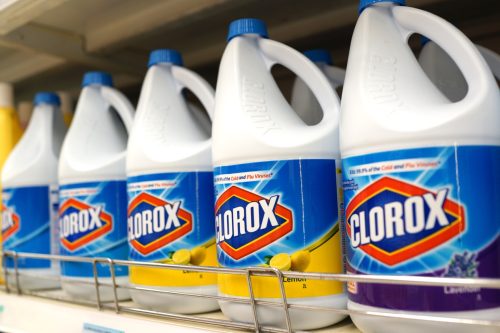
While many of us think of our washing machines as self-cleaning, that’s far from the case. One study published in 2007 in the journal Applied and Environmental Microbiology found that running a typical wash and rinse with detergent was not enough to remove a few infectious viruses.
But there’s a simple solution to getting the machine that cleans your clothes in tip-top shape. “Run your machine on a clean setting with a mixture of hot water and a squirt of bleach,” suggests O’Hanlon. This helps to kill off any nasties that could be lingering inside.
RELATED: 7 Filters in Your House You’re Probably Forgetting to Clean, Experts Say.
33. Clean your plants with a microfiber cloth.
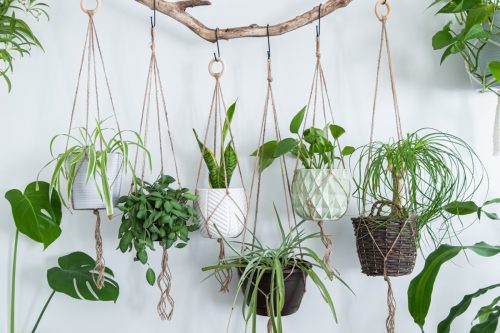
It’s important to keep your plants dust-free so that they can better absorb the sun’s energy and release more oxygen into the air. It doesn’t take long, especially when dealing with larger leaves. All you need to do is take a damp microfiber cloth and wipe them down. Be sure to get both sides—you’d be surprised to find out just how much dust they can collect!
34. Clean the oven without using any chemicals.
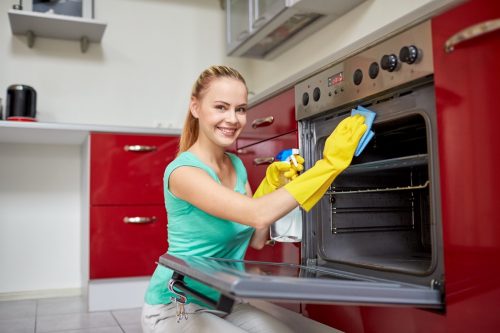
Lemon juice is a great substitute for chemical cleaners. If your oven is overdue for a cleaning, then simply combine half of a fresh lemon with a cup and half of water and place it in a microwave-safe bowl. Heat the oven to 250 degrees and place your mixture inside for 20 minutes. Let it cool for a bit before dipping a cloth into the bowl and wiping down the floors, walls, and racks of your oven. This same “steam clean” method can be used to clean your microwave, as well.
35. Remove pet hair using rubber gloves.
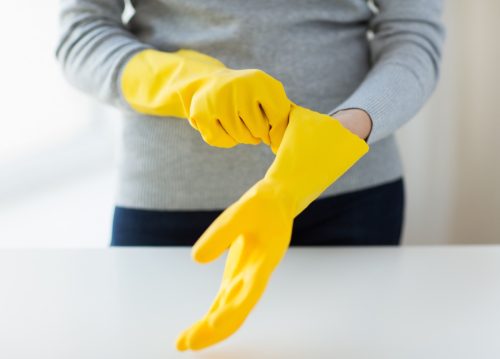
We all love our pets, but that doesn’t mean we have to love the messes they leave behind. Save yourself some time when it comes to removing excess pet hair from clothes or furniture by throwing on a pair of rubber gloves. Run your gloved hands over whatever surface you’re cleaning—the texture of the gloves will cause the hair to ball up so that you simply pick it up and throw it away.
36. Pick up broken glass with bread.
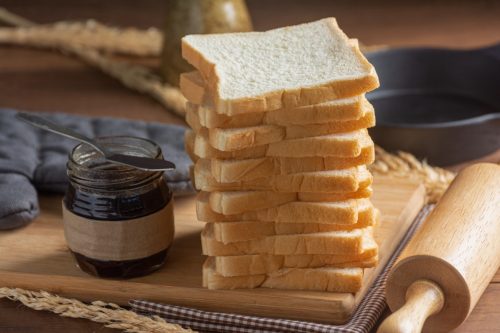
Speaking of using unconventional cleaning tools to remove unwanted debris: Have you ever thought about using bread to pick up scattered pieces of broken glass? Simply place the bread over the mess and the glass fragments will stick in the soft dough.
Wrapping Up
That’s it for our list of cleaning hacks but be sure to check back with us soon for even more useful tips. You can also sign up for our newsletter so you don’t miss out on what’s next.
- Source: Degree of Bacterial Contamination of Mobile Phone and Computer Keyboard Surfaces and Efficacy of Disinfection with Chlorhexidine Digluconate and Triclosan to Its Reduction
- Source: Microbiome analysis and confocal microscopy of used kitchen sponges reveal massive colonization by Acinetobacter, Moraxella and Chryseobacterium species
- Source: Microbial inactivation by microwave radiation in the home environment
- Source: The coffee-machine bacteriome: biodiversity and colonisation of the wasted coffee tray leach
- Source: Opportunistic pathogens enriched in showerhead biofilms
- Source: Enteric Virus Survival during Household Laundering and Impact of Disinfection with Sodium Hypochlorite